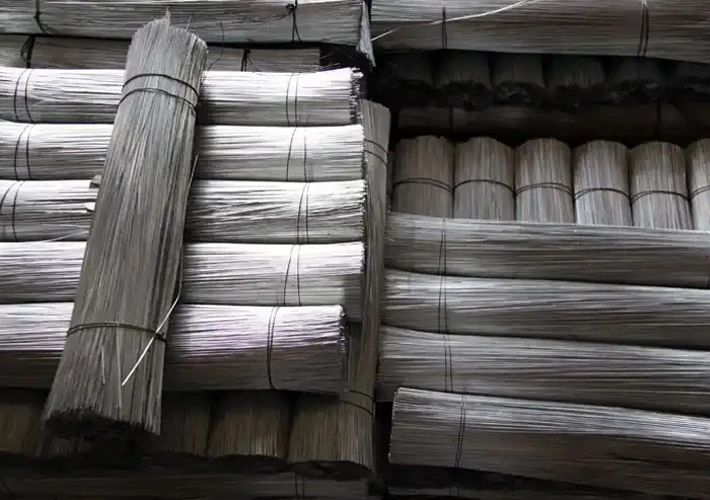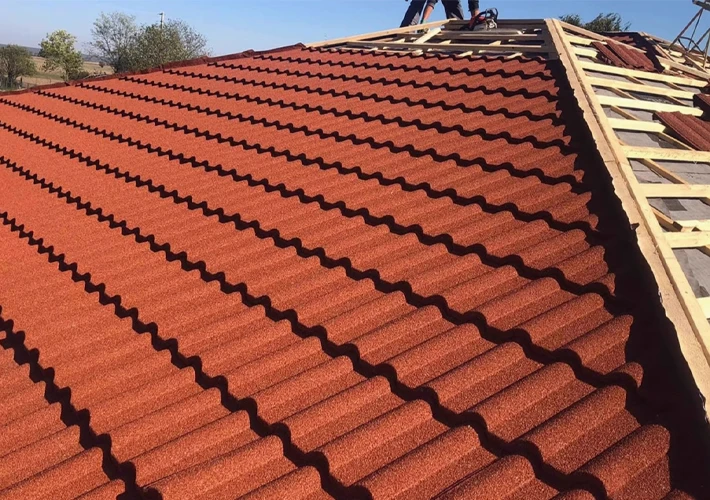
Barbed wire is a type of fencing wire that has sharp edges or points arranged at intervals along the strand. It is commonly used to create barriers or enclosures for various purposes, such as securing agricultural areas, livestock, and property boundaries. The sharp points on the wire are intended to deter animals or humans from crossing the barrier.
Key features of barbed wire include:
The construction of barbed wire involves the creation of a wire strand with sharp points or barbs spaced at intervals along its length. Here is a general overview of the construction process:
- Raw Materials:
- Wire: The primary material used for making barbed wire is steel wire. The wire may be plain or galvanized (coated with zinc for corrosion resistance). The gauge and thickness of the wire can vary depending on the intended use and level of durability required.
- Twisting:
- The construction process begins with twisting two strands of wire together. This twisting process creates a strong and flexible wire strand that serves as the base for the barbed wire.
- Barb Formation:
- After the wire strands are twisted together, the next step is to create the barbs. This is done by cutting the wire at specific intervals and then bending the cut sections to form sharp points.
- Spacing of Barbs:
- The spacing between barbs can vary, depending on the desired level of security or deterrence. Standard spacing is often around 4 to 5 inches (10 to 12.5 centimeters), but this can be adjusted based on the intended application.
- Fixing Barbs:
- The barbs are fixed onto the twisted wire strand, and they may be positioned in a staggered or alternating pattern along the length of the wire. This arrangement ensures that there are sharp points facing outward in multiple directions.
- Galvanization (Optional):
- In many cases, the finished barbed wire is galvanized to enhance its resistance to corrosion. Galvanization involves coating the wire with a layer of zinc through a process like hot-dip galvanizing or electroplating.
- Rolling and Packaging:
- Once the barbed wire is constructed and treated, it is rolled onto spools for ease of transportation and installation. The rolls can vary in length and weight, depending on the manufacturer and the intended use.
It’s important to note that safety precautions are crucial during the manufacturing process, as working with sharp wire can pose hazards. Additionally, the construction and use of barbed wire are often subject to local regulations and standards to ensure safety and compliance.

Barbed wire has various uses and applications, primarily centered around creating barriers and enclosures. Here are some common uses of barbed wire:
- Agricultural Fencing:
- One of the most common applications of barbed wire is for agricultural fencing. It is used to create boundaries around farmland and to keep livestock, such as cattle, sheep, and horses, contained within specific areas.
- Livestock Management:
- Barbed wire helps in managing and controlling the movement of livestock. It acts as a deterrent, preventing animals from crossing boundaries or escaping from designated areas.
- Security Fencing:
- Barbed wire is widely used for security purposes to deter unauthorized entry into restricted areas. It can be installed on top of walls, fences, or other barriers to enhance security measures around private properties, industrial sites, or sensitive installations.
- Military Applications:
- Historically, barbed wire has been used in military contexts to create defensive perimeters and obstacles. It hinders the movement of infantry and vehicles, adding an additional layer of defense.
- Prison and Correctional Facilities:
- Barbed wire is often utilized in the construction of perimeter fences for prisons and correctional facilities to prevent escape attempts.
- Border Fencing:
- Barbed wire is employed for creating barriers along national borders or property borders to control and restrict access.
- Temporary Enclosures:
- It is used in construction sites and other temporary locations to create barriers for safety or security reasons. Temporary enclosures can help keep people or animals away from potentially hazardous areas.
- Game Reserves and Wildlife Management:
- Barbed wire is sometimes used in wildlife management to create boundaries or protect certain areas within game reserves. However, care must be taken to minimize the risk of injury to wildlife.
- Warning Signs and Deterrence:
- Barbed wire, with its sharp points, serves as a visual deterrent and warning to individuals, discouraging them from attempting to climb over or pass through restricted areas.
While barbed wire is effective for its intended purposes, it’s important to use it responsibly and in accordance with local laws and regulations. Safety considerations are crucial, and proper signage should be used to warn people about the presence of barbed wire. Additionally, alternatives such as smooth wire or electric fencing may be considered in situations where the potential for injury is a concern.

Barbed wire offers several advantages in various applications due to its design and features. Here are some of the key advantages of using barbed wire:
- Deterrence:
- Barbed wire serves as a strong deterrent due to its sharp points or barbs. The presence of barbed wire can discourage trespassing, unauthorized entry, or attempts to breach a barrier, enhancing security.
- Cost-Effectiveness:
- Barbed wire is often more cost-effective than alternative fencing materials. It provides a practical and economical solution for creating boundaries, especially over large areas such as agricultural lands.
- Versatility:
- Barbed wire is versatile and can be used in various settings, including agricultural, industrial, military, and security applications. Its adaptability makes it a popular choice for different types of fencing needs.
- Ease of Installation:
- Barbed wire is relatively easy to install, making it a convenient choice for quick deployment. It can be installed on various types of support structures, such as wooden or metal posts.
- Low Maintenance:
- Once installed, barbed wire requires minimal maintenance. Regular inspections for damage or wear are advisable, but overall, it is a low-maintenance fencing option.
- Customizable:
- The design of barbed wire can be customized based on specific needs. This includes variations in barb spacing, wire thickness, and overall construction, allowing for flexibility in meeting different security and containment requirements.
- Security Enhancement:
- In security applications, barbed wire adds an extra layer of protection to fences or walls. It can be used in combination with other security measures to create a more formidable barrier.
- Wildlife Deterrence:
- In certain contexts, barbed wire can deter wildlife from entering specific areas, helping to protect crops, sensitive ecosystems, or other designated spaces.
- Durability:
- Barbed wire, especially when galvanized, is resistant to corrosion and can withstand various weather conditions. This durability ensures a longer lifespan for the fencing.
Despite these advantages, it’s important to note that barbed wire also has its drawbacks, particularly in terms of safety concerns. The sharp points on barbed wire can cause injuries to people and animals, and its use is subject to regulations in many regions. When considering the use of barbed wire, it’s crucial to balance its advantages with responsible installation and compliance with local laws and safety standards.





